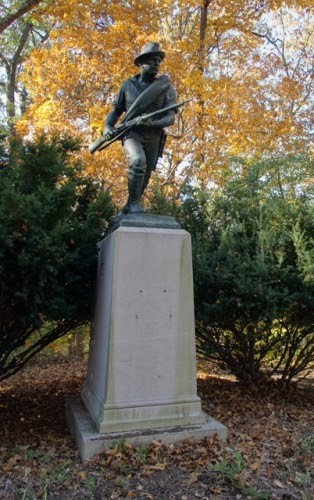Yale Divinity School: Spreading the Word
By: Chris Parkin
As these central figures aged, however, class sizes decreased so dramatically that “in the period immediately following the Civil War”, writes historian Roland H. Bainton, “Yale Divinity School was on the verge of closing. Even before the war attendance had declined from an average of eighty-seven during the years 1838 to 1843 to only twenty-two in 1858”. The school was saved from closing by Timothy Dwight, the grandson of Dwight IV. First he set about securing funds for the money-deprived school, and “by 1867, Dwight reported assets totaling $250,000, including gifts that endowed the Titus Street Professorship of Ecclesiastical History, Buckingham Professorship of Sacred Literature, Holmes Professorship of Hebrew Language and Literature, and Winkley Professorship in Biblical Theology.” In order to house the increased staff, the Divinity School began searching for a location for its own building in 1866, with its cornerstone being laid in 1869. With these financial gifts and its new facilities, Yale Divinity School’s enrollment increased rapidly, and Timothy Dwight secured the school’s future for decades to come. By 1932 Yale Divinity School had outgrown its old campus on Elm Street, and so it was moved to its current location on Prospect Street.
Yale Divinity School was founded, and still persists, with the mission of training Christian ministers. As Yale’s notoriety increased and spread throughout the country and the world, so too did the scope of Yale Divinity School’s ministry. Between its founding in 1822 and its centennial, “three thousand six hundred and eighteen men have studied in the Divinity School… and they have gone out into all the states of the Union and into all the lands of the Earth to invest their training in unselfish service… two hundred and fifty men have gone to the foreign field as missionaries...”, according to a centennial school history exhibit. This growth and outreach was made possible by devoted faculty, such as Dean Charles Reynolds Brown, who embraced the global role that Yale Divinity School was taking as early as 1914. He stated that “the missionary is still emphatically a teacher of the Gospel, but the rapid development of the great mission…” means that Yale ministers would have to learn how to preach to and cooperate with people from different cultures in “the era of a new China, a new Japan, a new India and a new South Africa.” Reverend Lynch recognized the new international spirit of the 20th century in his lecture “The Minister in Association with International Movements”, with events such as the Hague Conventions of 1899 and 1907 and treaties such as the Entente Cordiale spelling the beginning of the use of international cooperation and arbitration to settle disputes and avoid conflicts. He shows how Christian ministers can affect peace in the world through the example of a Catholic Bishop of Chile preventing a war with Argentina in 1901 by appealing to each nation’s Christian nature. Due to these developments, the school has bolstered its efforts in training more and even more capable ministers to serve far from its humble beginnings in New England. It has evidently been successful in this endeavor, as Yale Divinity School continues to educate ministers for our ever more intricate world.
Yale Divinity School's new campus, courtesy of Yale University.
Bibliography
“A Greater Divinity School.” Yale Daily News. January 24, 1914, 91 edition.
Bainton, Roland H. Yale and the Ministry. New York, NY: Harper, 1957.
Education for Christian Service. New Haven: Yale University Press, 1922.
Macfarland, Charles S. New Haven, CT: Yale University Press, 1909. The Christian Ministry and the Social Order: Lectures Delivered in the Course in Pastoral Functions at Yale Divinity School, 1908-1909.
“Yale Divinity School Milestones, 1822-2012.” Yale Divinity Library Exhibit: YDS Milestones 1822-2012. Yale University Library, October 23, 2012.




Comments
Post a Comment